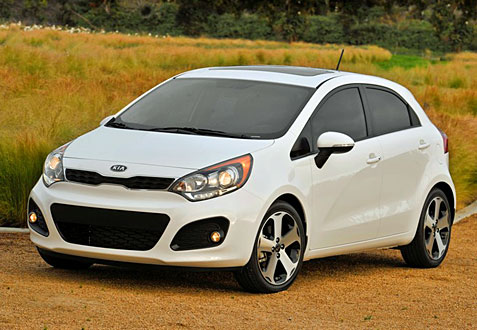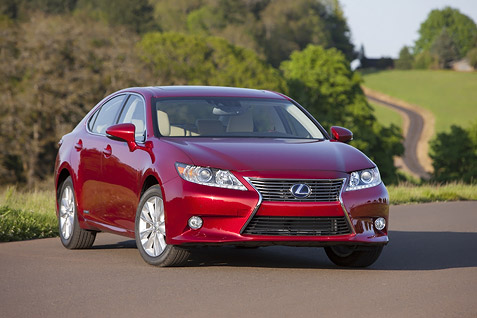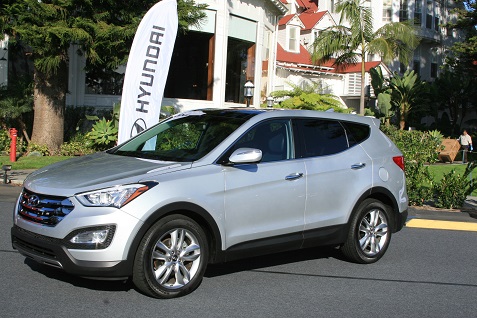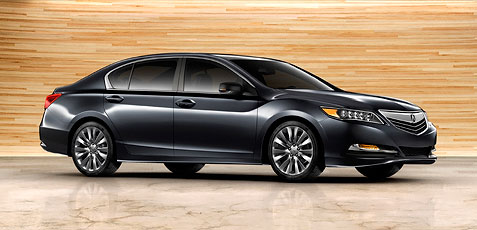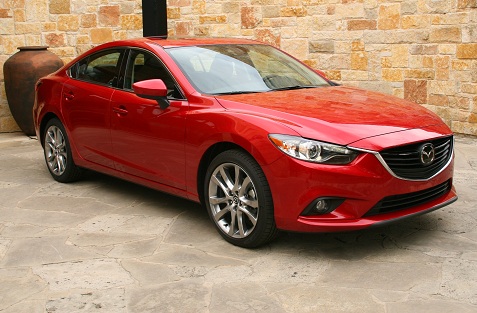He kept taunting me from the rearview mirror, daring me to bury the needle even further, to more aggressively attack the relentless twists and turns ahead of me, to see just how far I could push this beast of a car I was driving. The motorcycle driver behind me had an advantage, of course, being able to take the hairpin curves of the road at a higher speed than I could, and he also seemed to know the area intimately, weaving his way around each bend in the road with confidence, no matter how severe, as if he knew each was coming miles ahead of time. I too had an advantage, however, specifically the 310-HP V6 engine under the hood of the all-new 2014 Acura RLX I was driving through a winding road in Napa Valley. The biker may have had the upper hand on the curves, but I owned the rest of the road. He’d inch closer when I slowed down ahead of a particularly sharp corner, but the RLX left him in the dust when the road opened up ahead of us again, effortlessly accelerating as I watched the biker shrink in my mirror. Unfortunately, the RLX handled the curves on our route much better than my wife’s stomach did, so I wisely chose marital peace with my white-knuckled passenger over my inflated ego and eventually let the biker pass. But he knew. And I knew he knew.
PERFORMANCE
Clearly, Acura’s new luxury sedan is a blast to drive, which is why they invited us out to Solage Calistoga in Napa Valley to drive the RLX. The twists and turns in the surrounding roads were the perfect setting to test the limits of this direct-injection 3.5L V6 sedan, whose Precision All-Wheel Steer (P-AWS) system offered instantaneous and precise control through even the tightest of corners during our test drive. While my wife would argue that I took the turns too fast, the precision the P-AWS system offers assured me that I was only scratching the surface. My biker friend got off easy!
During our time at Solage, Acura talked about the three pillars of their Smart Luxury approach, the first of which is sustainability. The four-door RLX drives and responds like a sports car, displaying impressive agility through the winding roads with instantaneous acceleration, particularly when Sport Mode is enabled. And yet, those 310 horses deliver class-leading economy with 24 combined MPG, including 31 MPG on the highway.
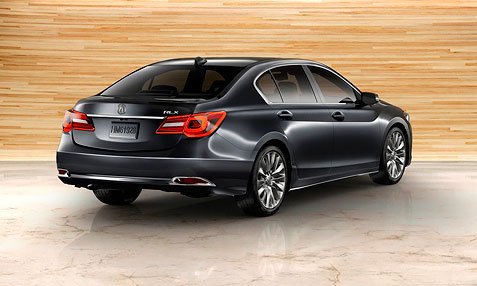
We also really enjoyed the Adaptive Cruise Control with Low-Speed Follow, which is easily activated from the steering wheel. As someone who relies on cruise control during long drives, I loved how easily this system works, and just how responsive it is. Just set the speed as you normally would with cruise control, then set your desired distance from the car in front of you. The RLX will then speed up and slow down based on how fast or slow the car in front of you is driving. If they come to a stop at a stop sign, you’ll stop too. But, as Acura warned us when we buckled up for our test drive, if that car rolls through the stop sign, you’ll roll right with them! Combined with the Lane Keeping Assist system, this Adaptive Cruise Control speaks to the second pillar in Acura’s Smart Luxury approach: Time is luxury.
INTERIOR
Acura aimed for customization, ease of use and intuitive controls with the RLX. Mission accomplished. Most notable is the debut of the next-generation AcuraLink connected car system, a cloud-based application that allows drivers to access information like near real-time surface street traffic information and media feeds from sources like Twitter and Facebook while providing a Pandora interface, Bluetooth connectivity, text-to-voice SMS texting and much more, all without taking your eyes off the road or even picking up your phone. The RLX also comes standard with a beautiful seven-inch On-Demand Multi-Use Display with audible and tactile feedback, and audiophiles will want to upgrade to the Acura/ELS Studio Premium Audio System, a 14-speaker marvel that was developed with the help of Grammy winning producer and engineer Elliot Scheiner. This system must be heard to be believed.
Gadgets and gizmos aside, the interior of the RLX exudes luxury, with its heated 12-way adjustable seats and the stitched leather on the steering wheel, console and instrument panel, which looked even more impressive all lit up at night. In fact, after our initial late-afternoon test drive, we hopped back into the RLX with a couple of our fellow testers and headed to nearby Cade Winery for an amazing dinner, and the panel was quite a sight. Additionally, the RLX boasts the most spacious five-passenger seating in its class, which our backseat passengers most definitely appreciated on our way to dinner that night.
EXTERIOR
The RLX is quite an impressive piece of machinery, inside and out, with a look that will surely help it stand out in this crowded class. Most striking are the Jewel Eye headlights, a set of 10 LEDs stacked in two rows which give the RLX a distinctive appearance while providing improved brightness, distribution and down-the-road illumination on our drive to Cade Winery.
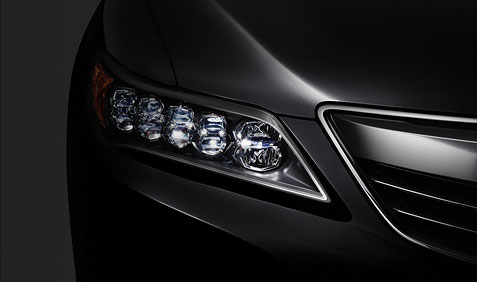
While the RLX doesn’t necessarily break any new design ground, it clearly is an improvement over its predecessor, the RL. Most impressive is the RLX’s ability to appeal to those looking for the room of a full-sized sedan while still maintaining the look and feel of a mid-sized sedan with its wide, athletic stance that just begs you to see what’s under the hood.
CONCLUSION
The final pillar of Acura’s Smart Luxury approach is value, and with a base of around $48,000, the RLX has an advantage over competitors like the Lexus GS, Mercedes-Benz E-Class, BMW 5 Series and Audi A6. Those are some heavy hitters, to be sure, but with the RLX representing improvement by leaps and bounds over the RL, and with a truly impressive set of features that enhances the driving experience, Acura is ready to do some heavy hitting of its own with its new flagship sedan.
